Coloring with pencils is a fun and relaxing activity that can produce beautiful results. However, to achieve a realistic and smooth look, you will need to learn one essential skill: BLENDING.
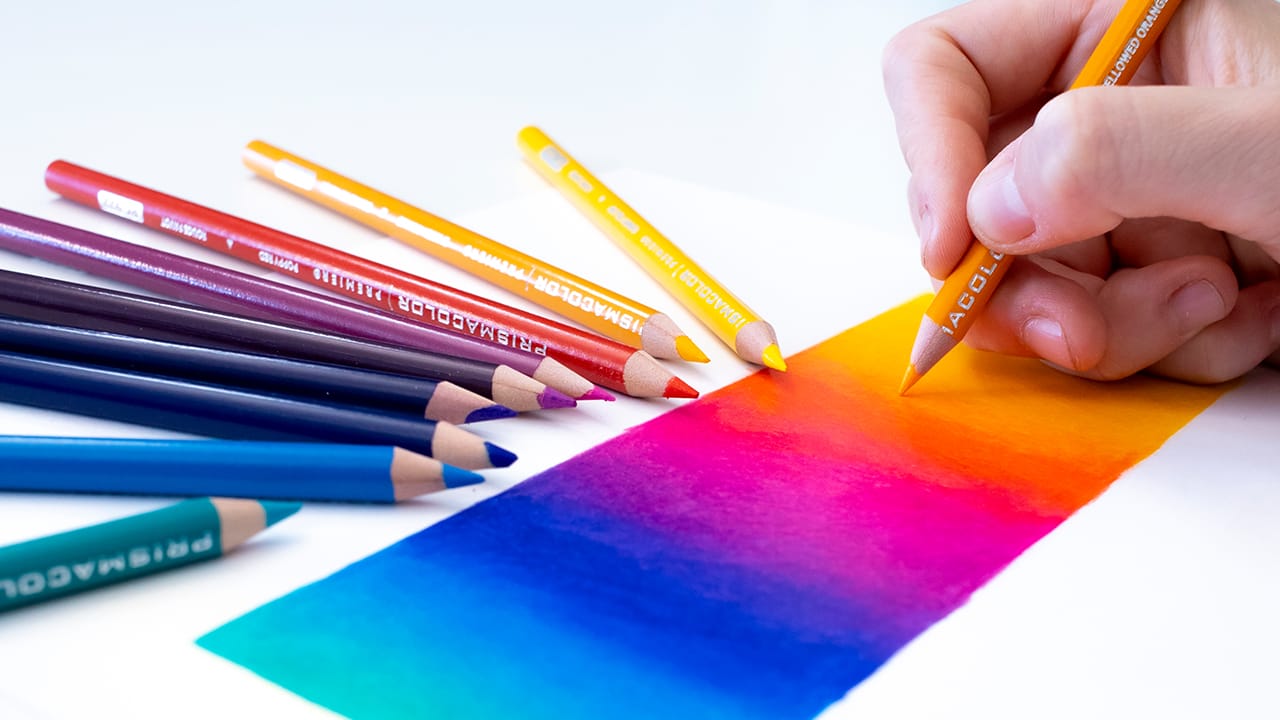
If you can learn to blend pencils, you can color almost anything. You can blend color from dark to light or blend one color to another. If you were to color a sunset, for instance, you’d likely blend colors from deep red to orange to yellow in a soft transition. ☀️
Looking for the right pencils to blend with can be a challenge, especially with how many choices there are out there. Some pencils make blending much easier and give better results for both new and experienced artists.
While not all pencils blend the same, you can blend ANY brand of pencils with the right paper and the right technique. The important thing to keep in mind is that cheaper brands will sometimes take more effort and patience to produce the same results compared to higher quality and more expensive pencils.
This video and article is not sponsored by any brand or artist. All information presented in this article and video are my opinions only. This post contains affiliate links and I may earn a commission if you click them (at no cost to you).
Quick links to different sections in the blog:
How I Tested the Colored Pencils
For this test, I got to blending over 90+ brands of colored pencils, including popular brands like Prismacolor, Faber-Castell, and Caran d’Ache.

(These were very cheap colored pencils, I swear 😇, otherwise I’d be crying)
My goal when testing and comparing all these colored pencils was to find out exactly which pencils to reach for when blending and which to avoid where possible.
For each brand, I did a first blend test on the Neenah Bristol Vellum paper. I took each colored pencil through its paces, blending a 1-color gradient and a 3-color gradient while paying particularly close attention to how each pencil felt during this process and how easy they were to blend.
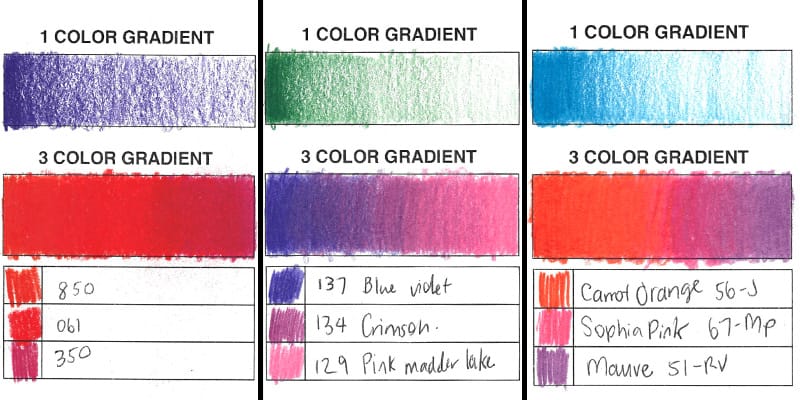
For the second blend test, I blended all 90+ brands on a variety of different papers, including:
- Canson Bristol Smooth
- Strathmore Toned Paper
- Standard Printer Paper
- Smooth Card Stock.
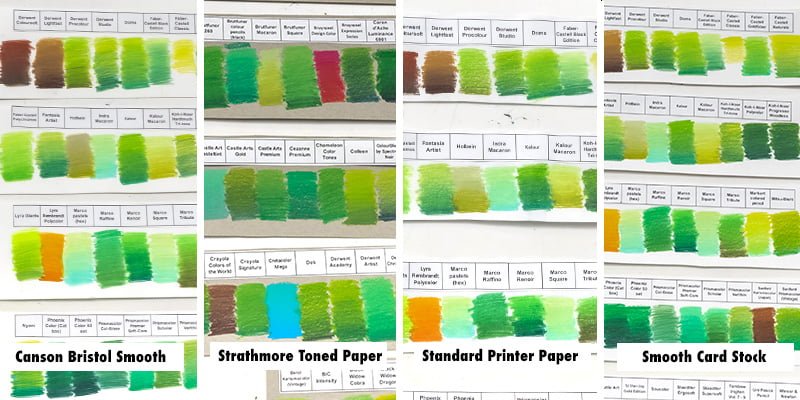
I did this to see if any pencils performed significantly better or worse on different types of paper. If you would like more help selecting which paper will work best for you, check out my blog: How to Choose the Best Paper for Coloring Pages.
Keep reading to see the pencil results below!
Why Is Blending Important?
Blending is a technique artists use to create smooth transitions between different colors (or intensities of the same color). Blending allows artists to create depth, and dimensionality, and gives their work a more polished and professional look.
Different methods of blending can involve different tools like specific ‘blending’ pencils, dry tools, or solvents. (I compared every type of blending here!)
But you don’t need any special equipment to start blending; all you need is a set of colored pencils.
The best way to blend colored pencils is to work in light layers and slowly build up your colors.
Start with the lightest pressure and overlap each of your colors where you are wanting them to blend together.
Here’s a quick video explanation of how to overlap your colors:
As you add more layers on top, you can increase your pressure. There’s no perfect rule for how much pressure to use or how much to overlap your pencils, so it’s best to practice this and get a feel for how your colored pencils and your chosen paper work together and develop your own technique.
Layering forms the foundation for almost every other blending method, including blending with solvents or burnishing with your pencils.
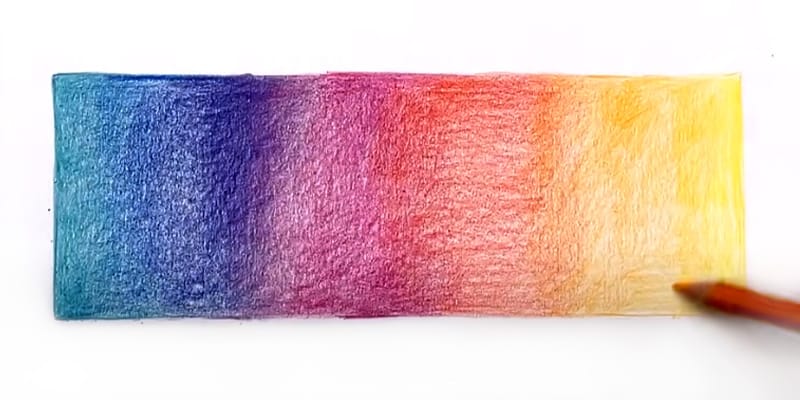
(Blend with layering before burnishing)
Creamier pencils (like Prismacolor Premier) make the blending process easier because the colors tend to “melt” together, especially on the final layers. But using this method, you can blend any type of colored pencils… even Crayola!
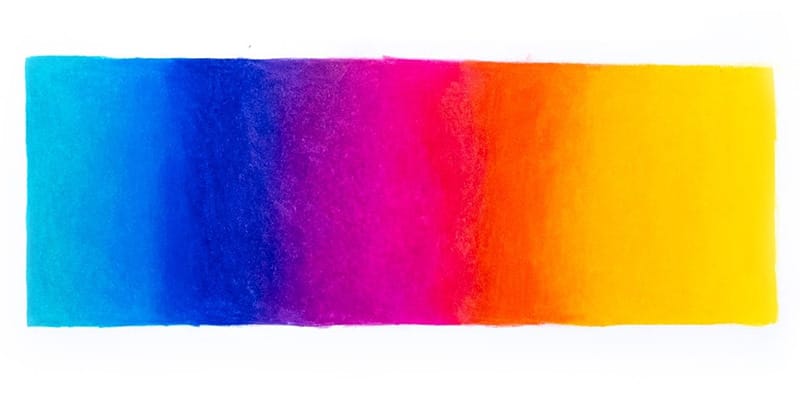
(Blend after burnishing)
If you are just starting or would like a refresher, you can check out my blog ‘How to Blend Colored Pencils’ or check out my video tutorial ‘How to BLEND COLORED PENCILS For Beginners (Prismacolor Tutorial)’.
The Results
A blendable soft core is one of the most popular features in a coloring pencil, so much so that brands often include this in their advertising. A soft core does have some downsides like more breakage and not lasting as long as a firmer pencil, but in most cases, colored pencils with a waxier, softer core will blend more easily than pencils that have a firm or oil-based core.
For this test, each pencil’s blending score was based on:
- How they felt during the blending process
- How easy they were to blend
- How well the blending turned out and
- How each pencil performed on different paper
Each pencil was given a score between 1 and 5 (F to A) or 5+ (S) if they were off the charts. 📈 These scores are reflected in this handy tier list 😁.
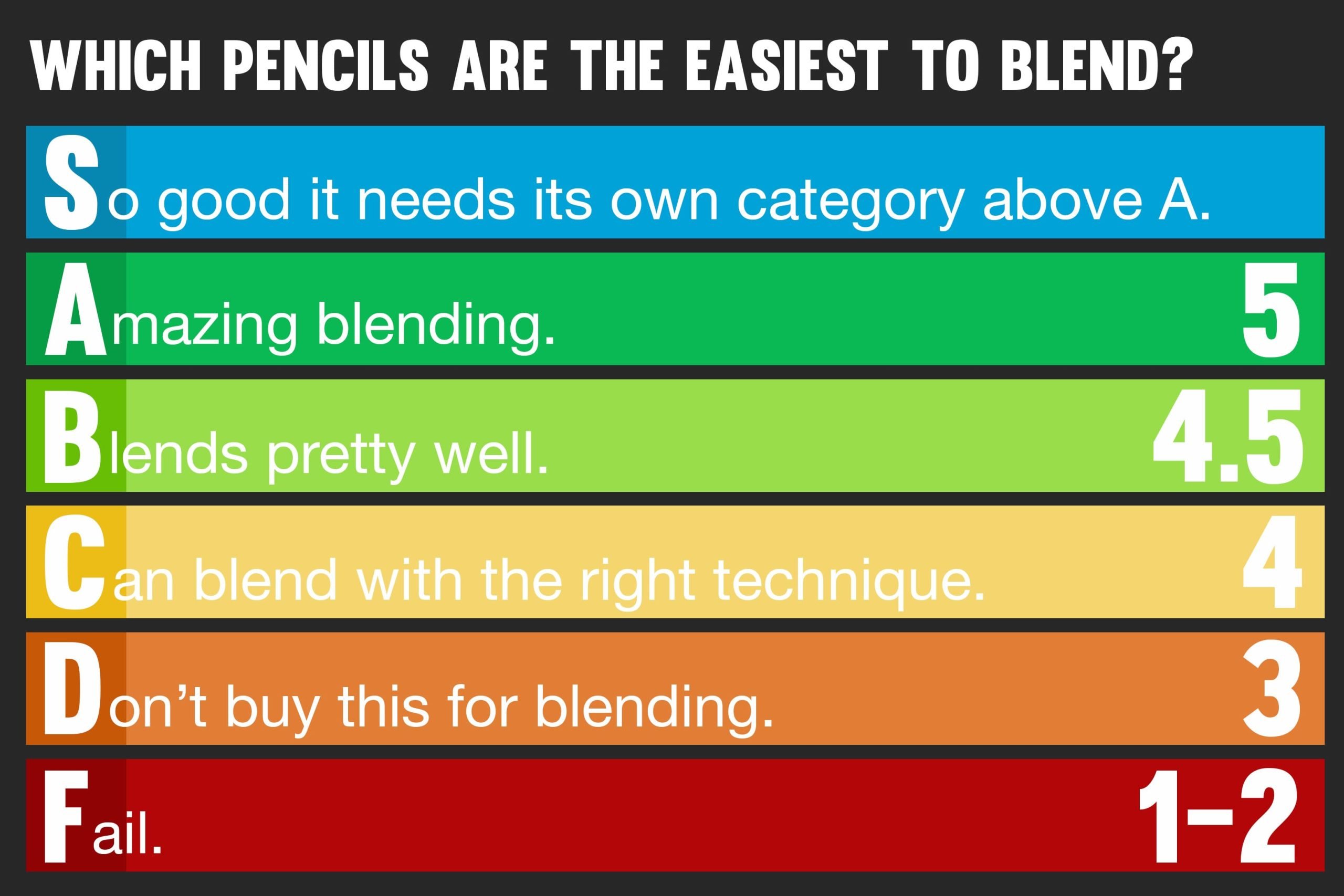
Here are how the colored pencils performed on this blending test (sorted alphabetically):
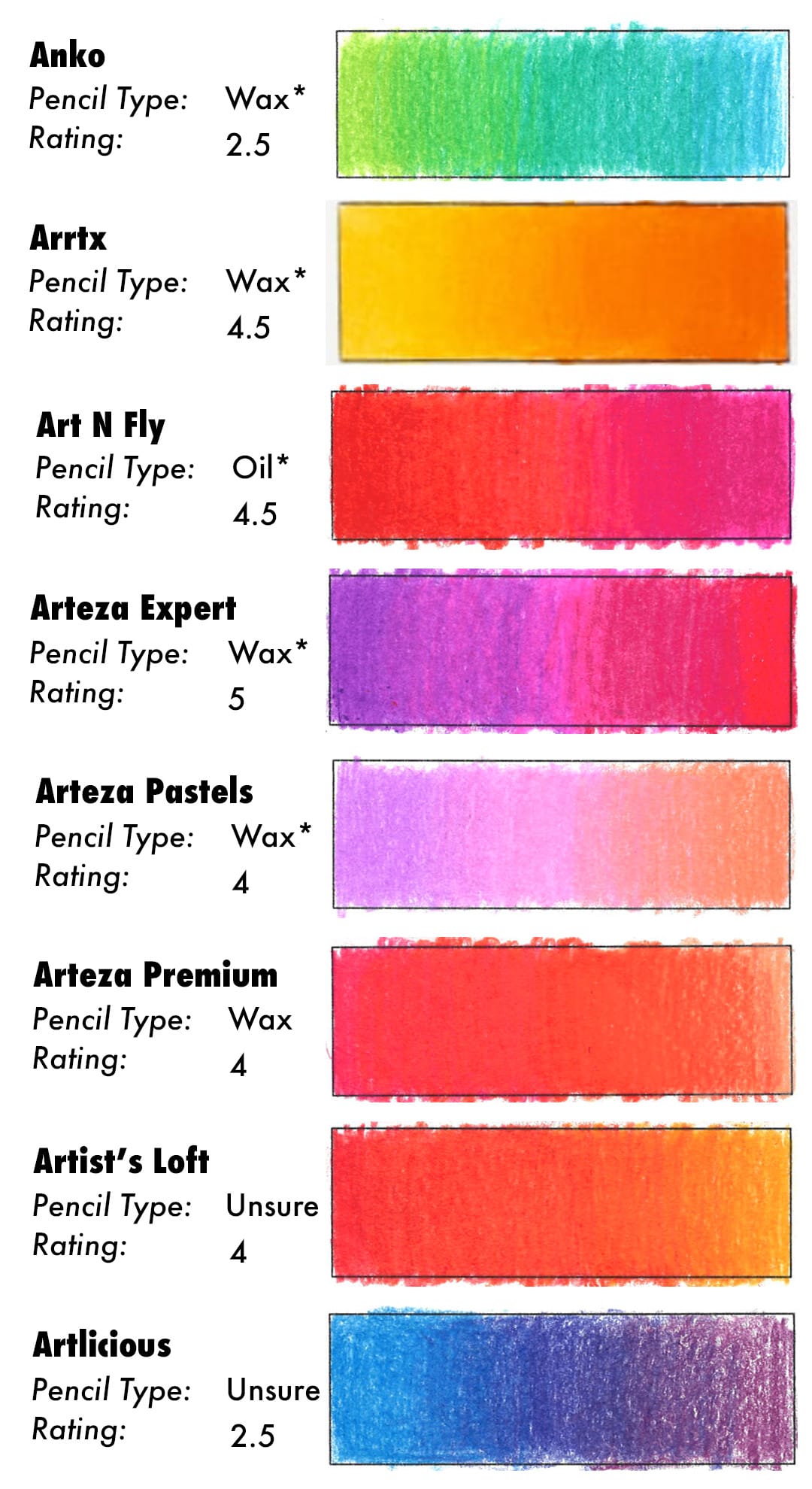
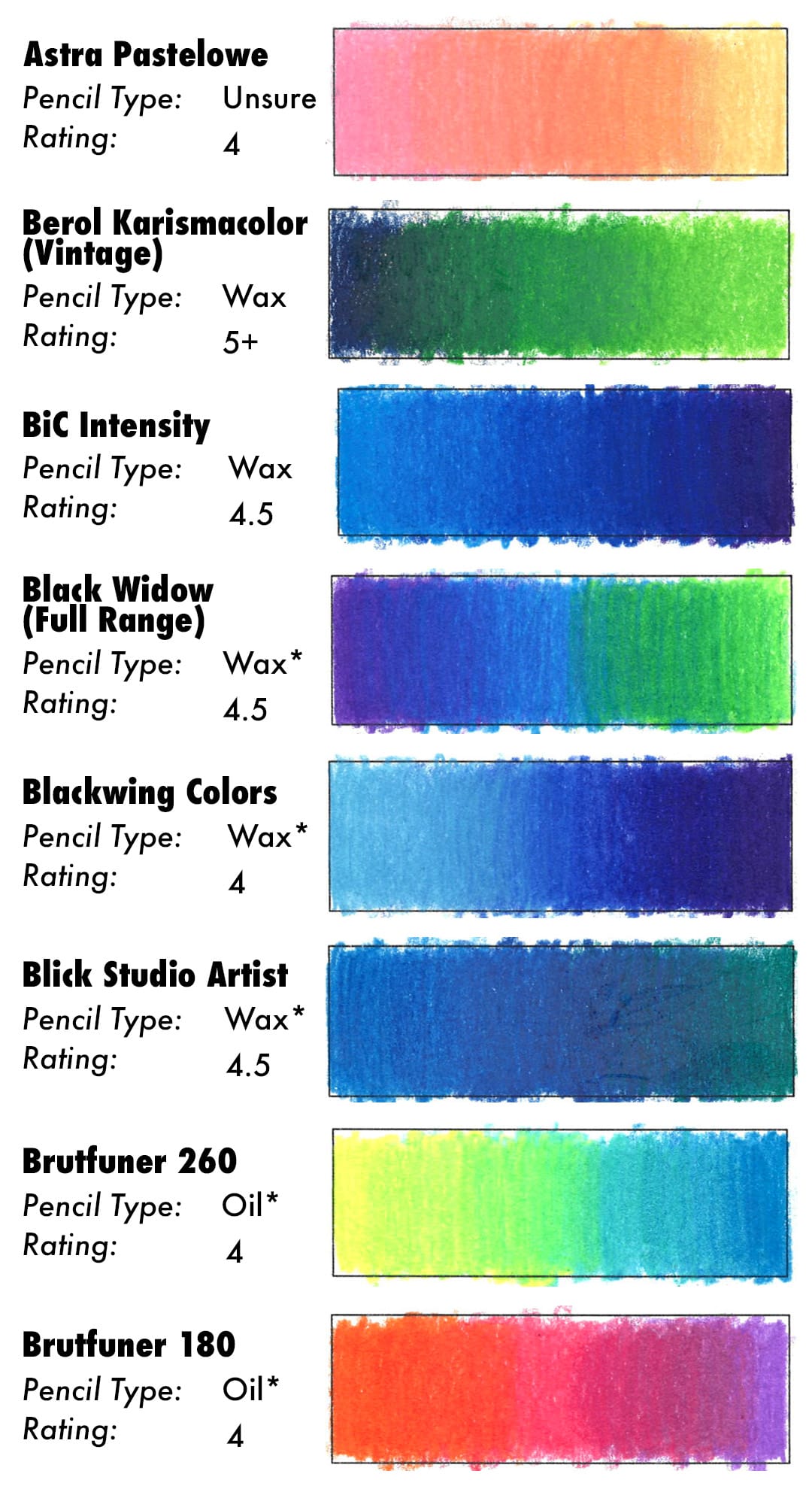
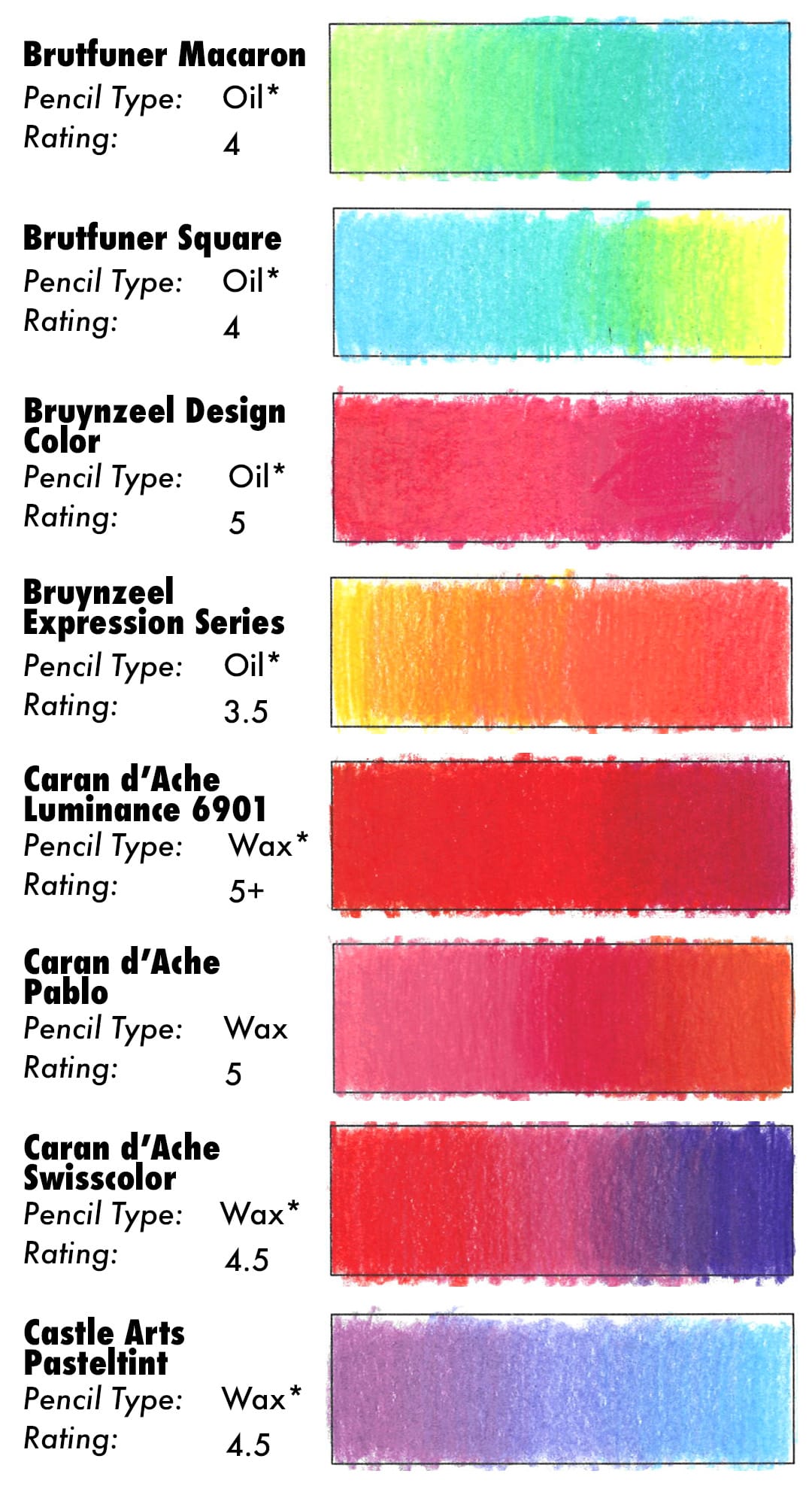
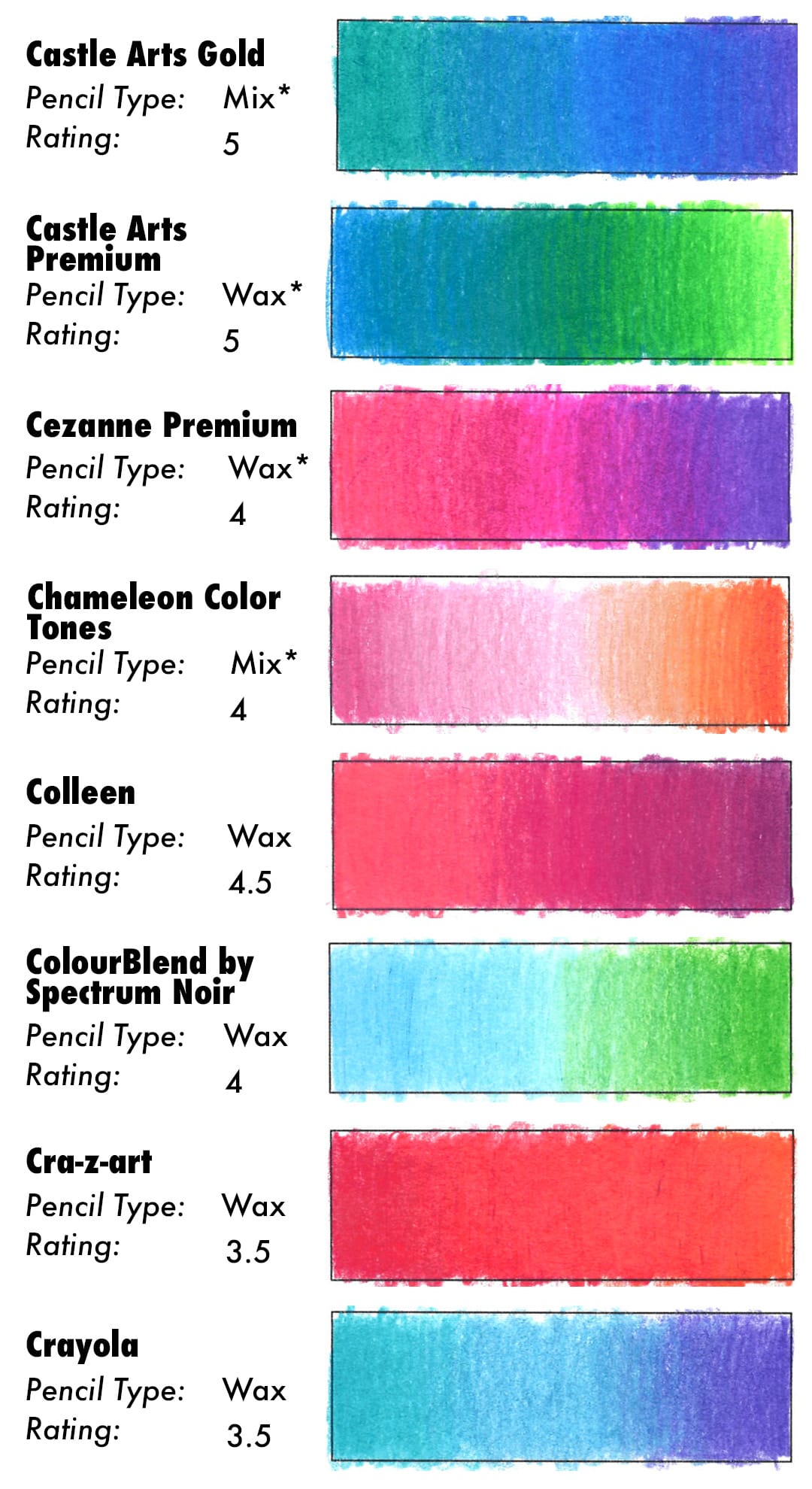
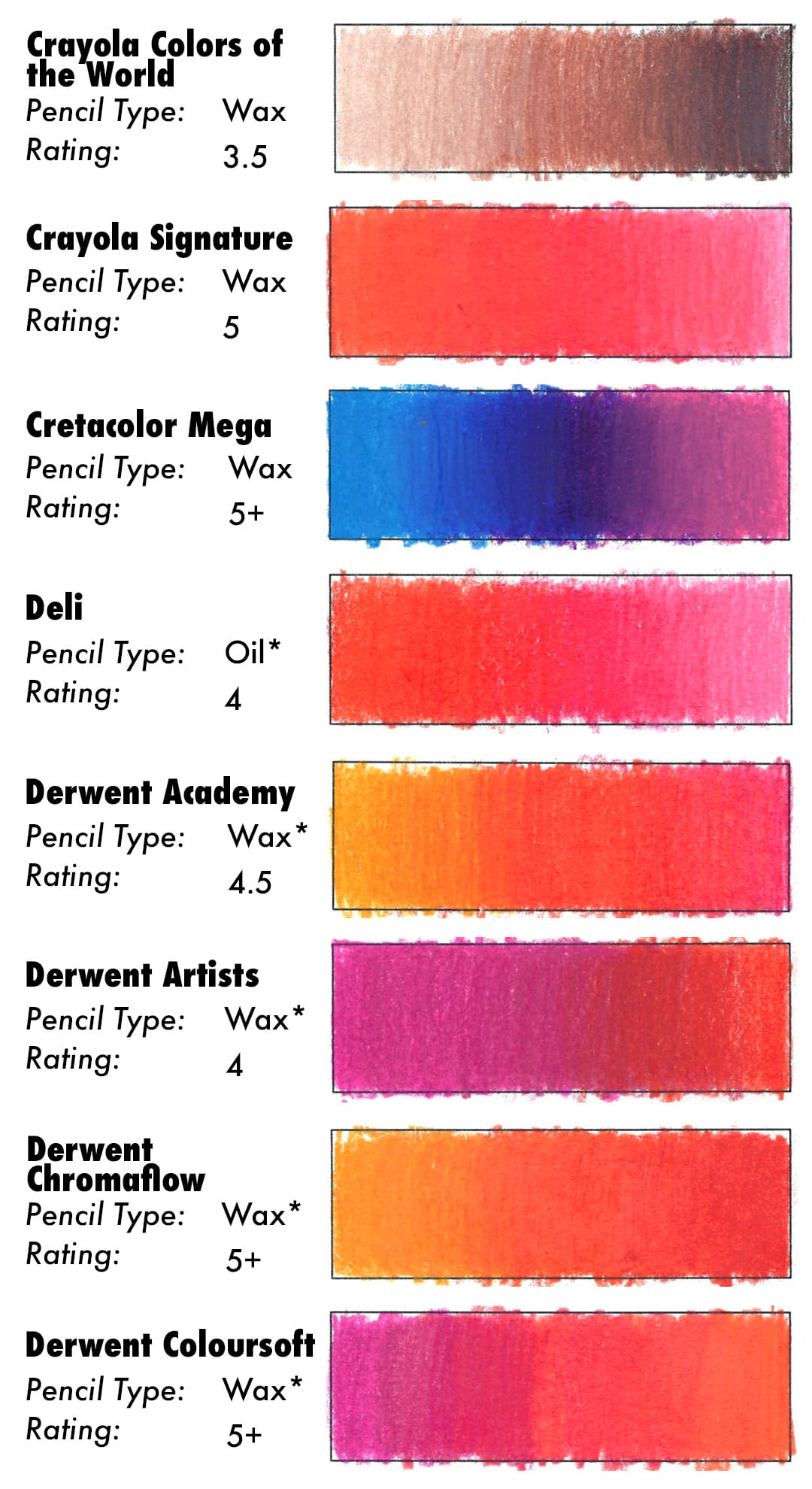
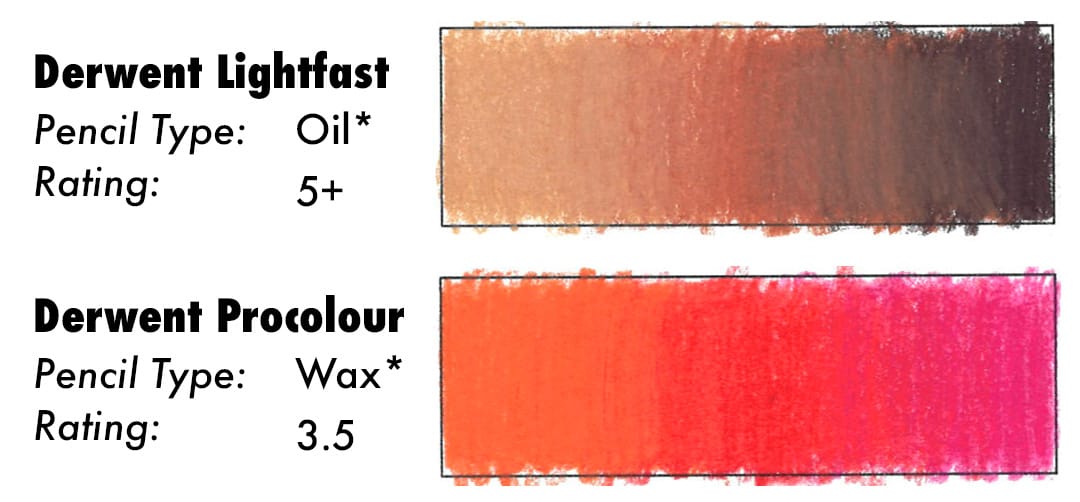
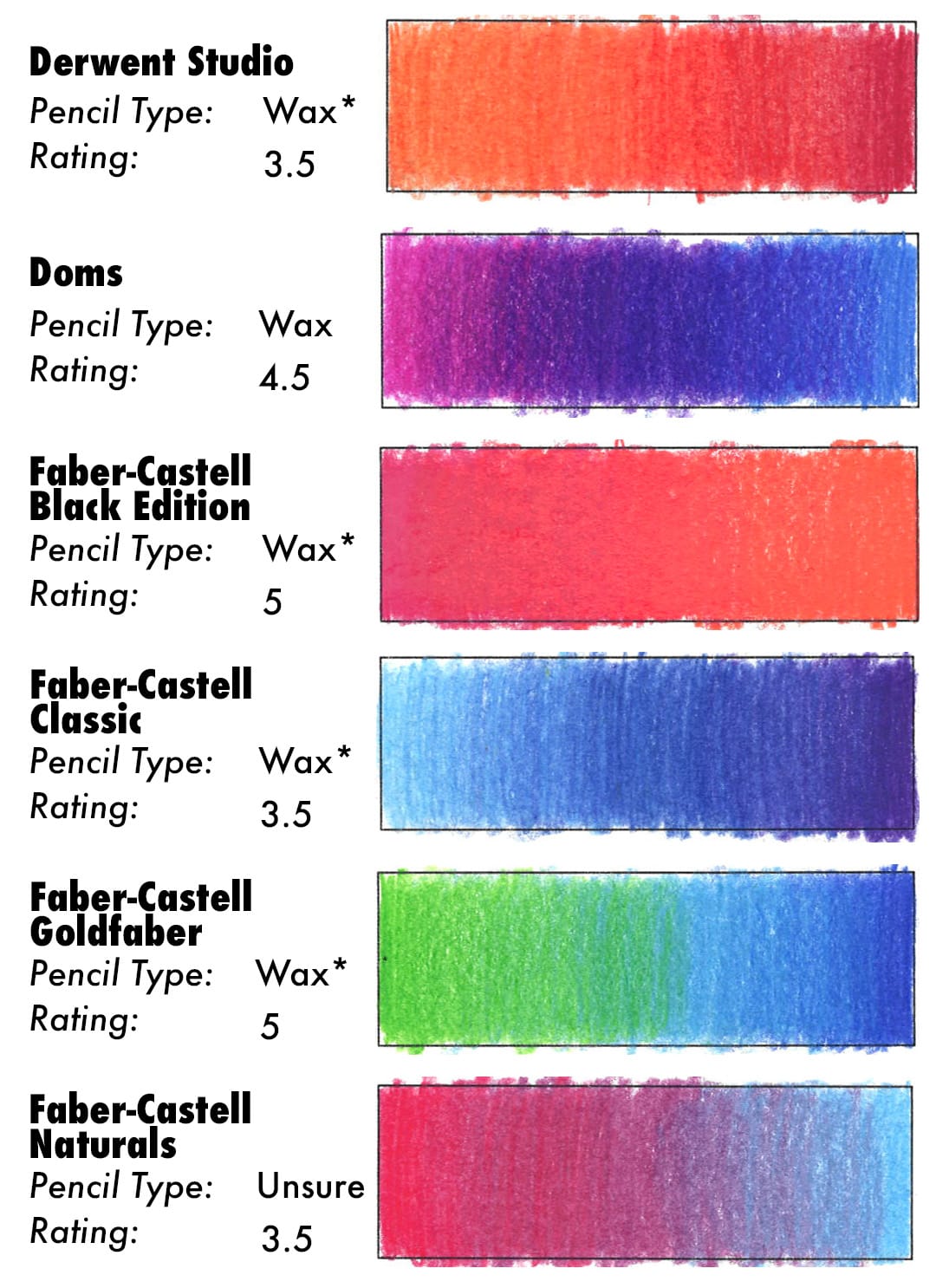
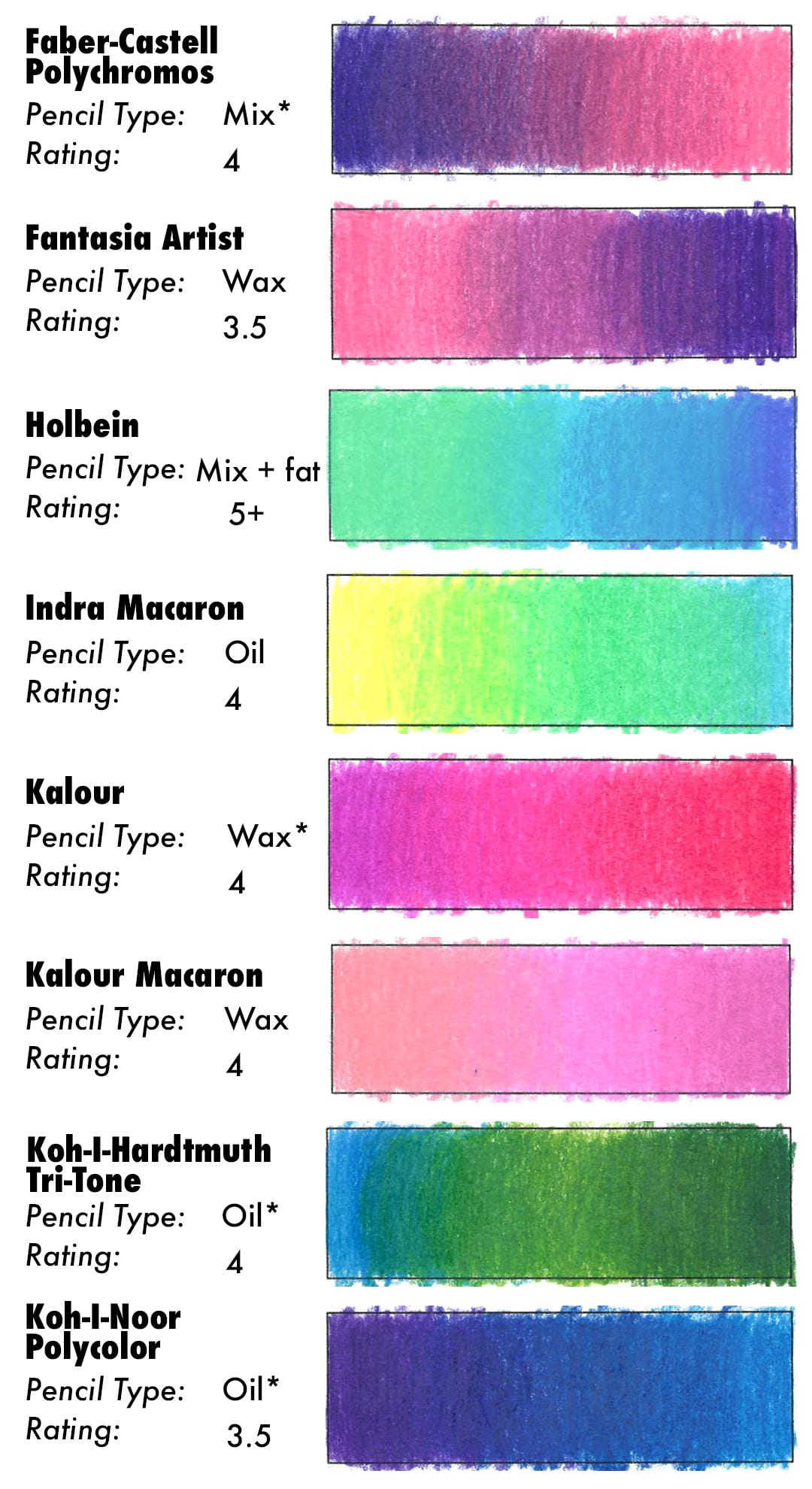
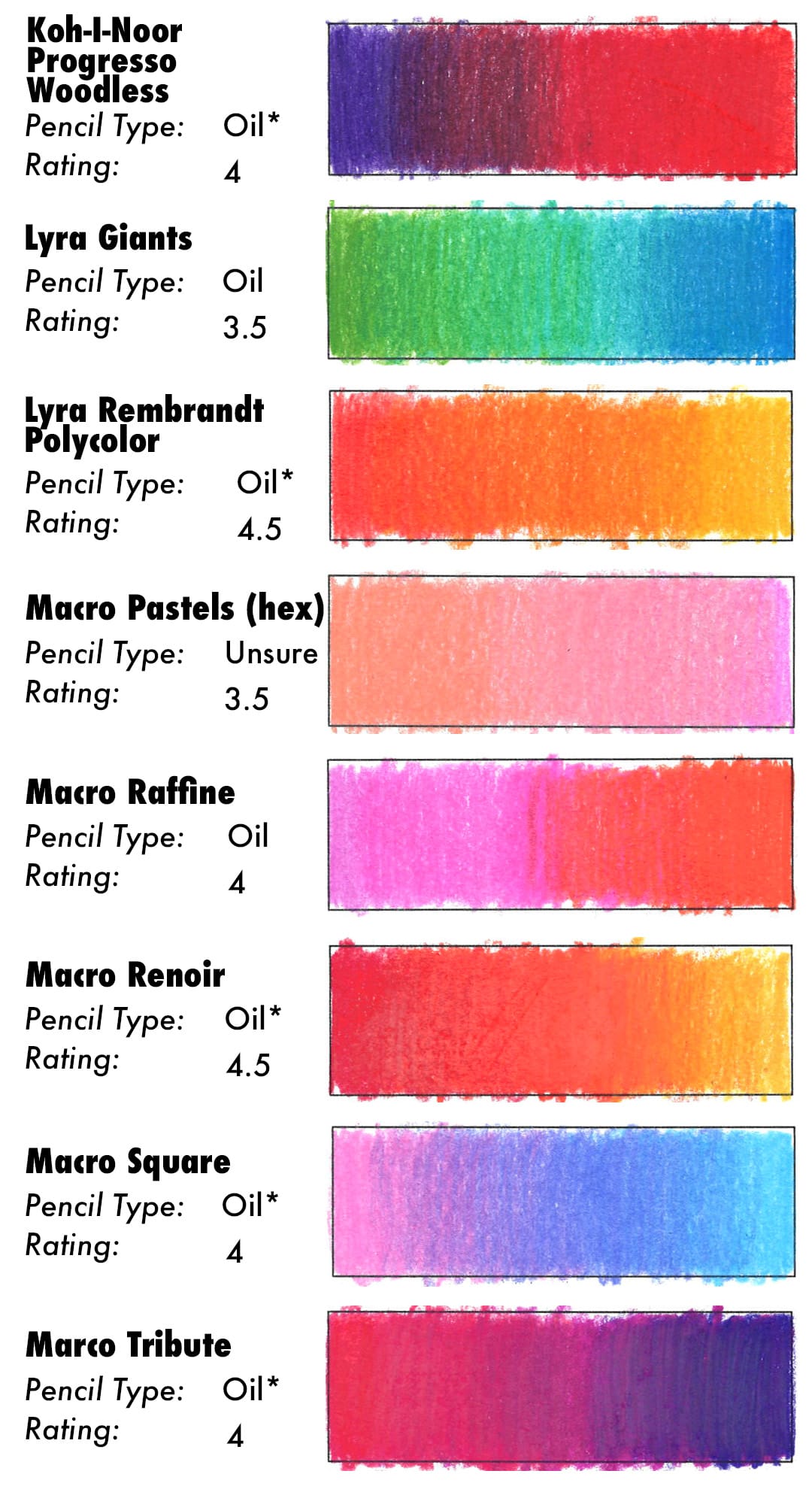
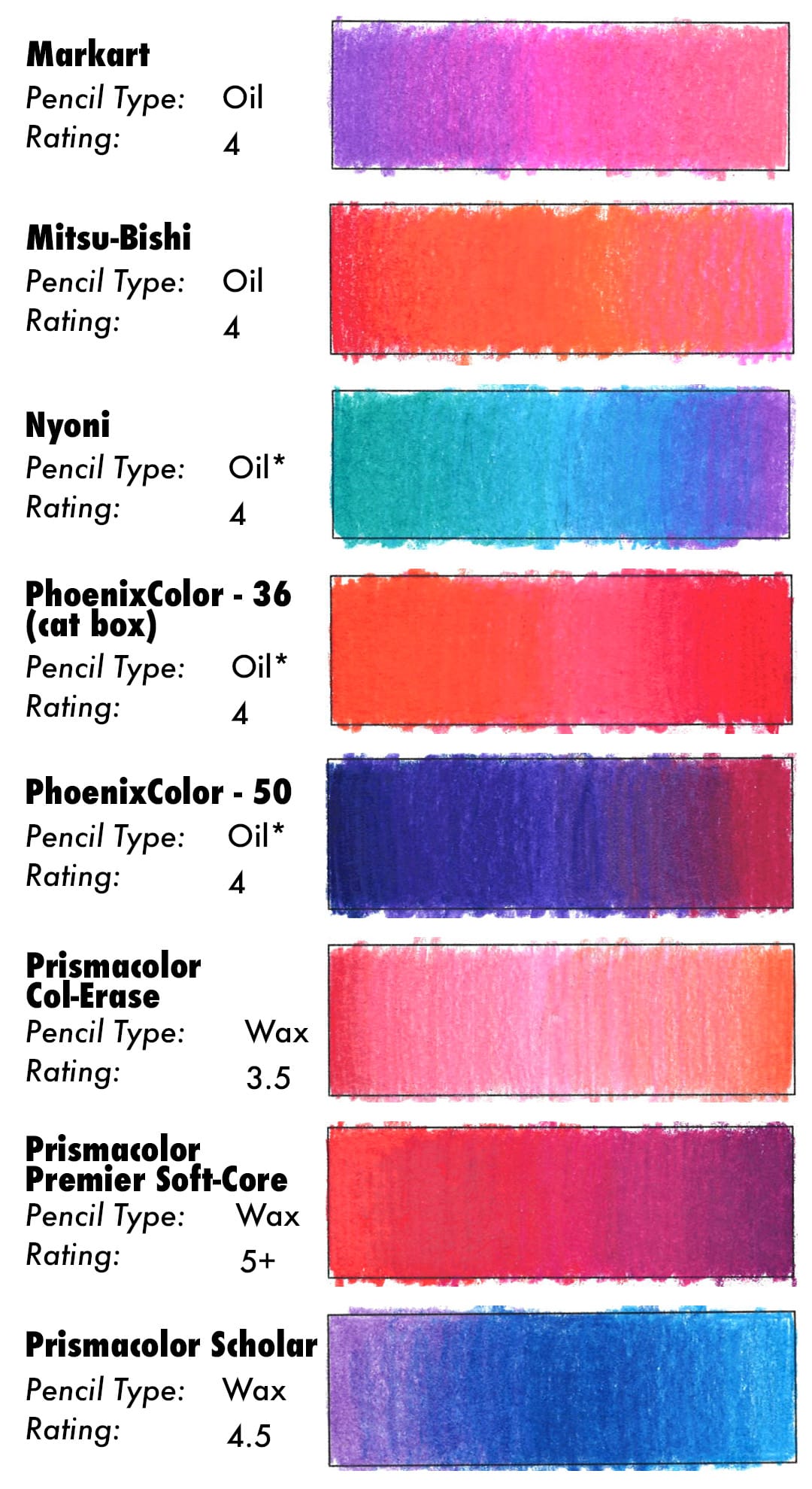
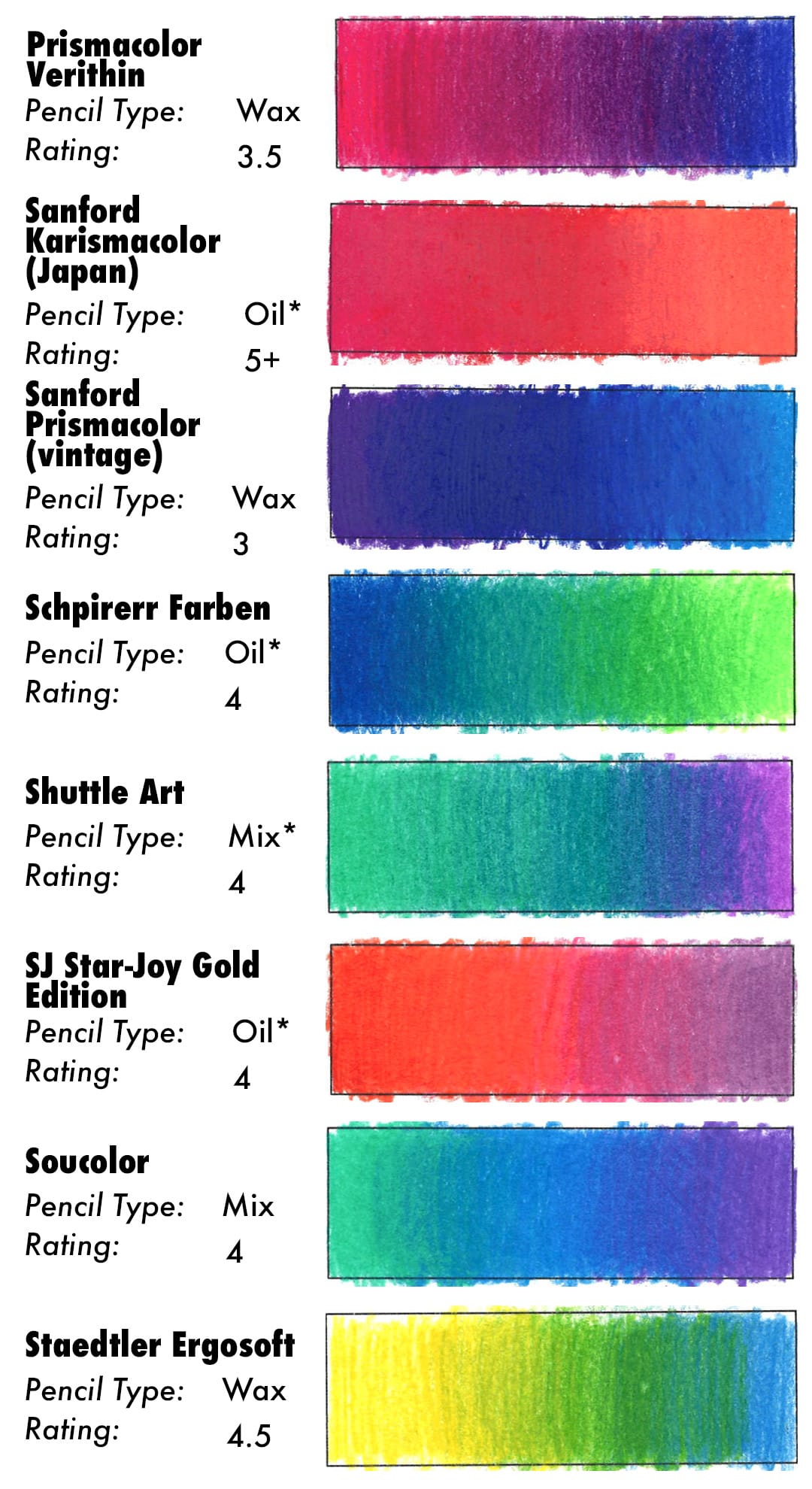
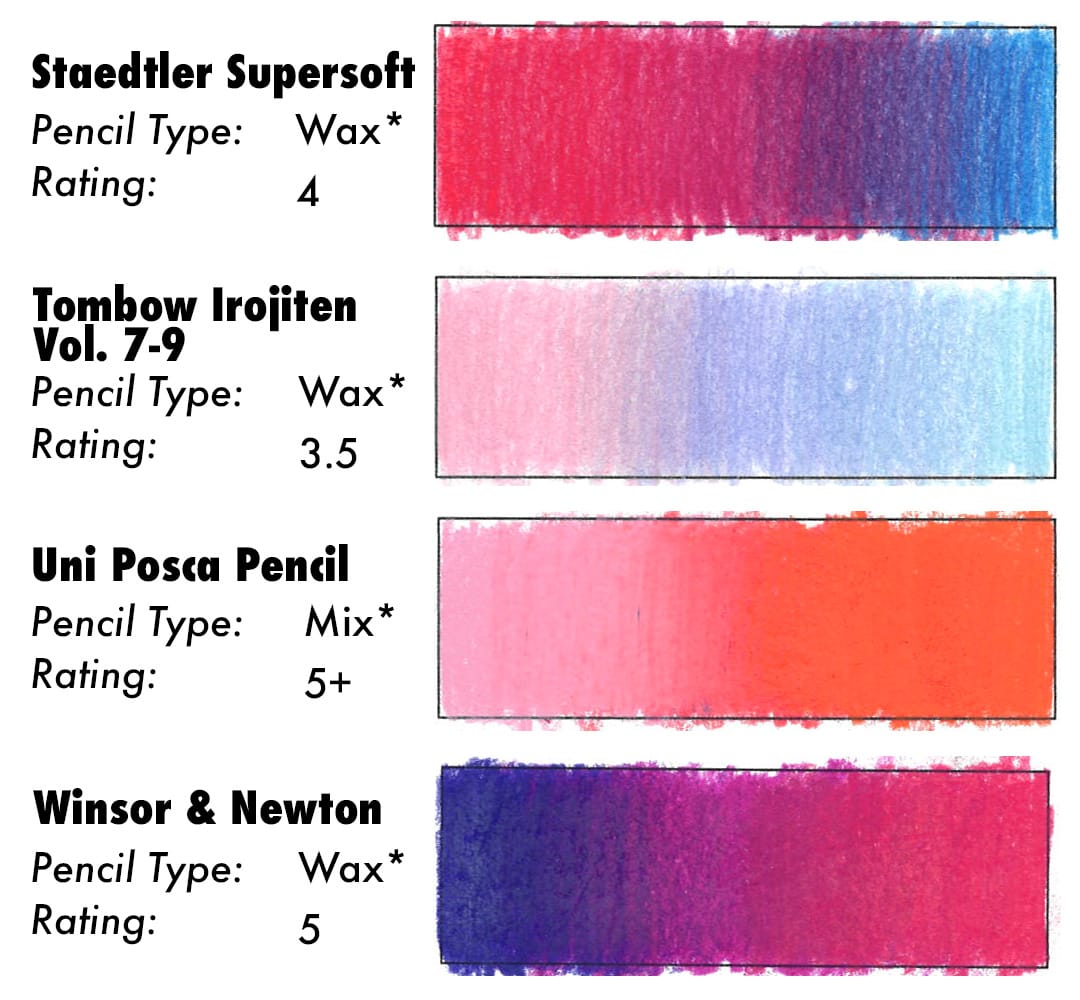
Which Colored Pencils Blended the Best?
Unsurprisingly, the colored pencils with a firmer core didn’t perform great on this test, while the soft & creamy colored pencils performed much better.
Here is the list of the best colored pencils for blending (all scoring a 5+):
This information should help you make an informed decision when you are searching for the right pencils to blend. But remember that the right technique and paper will help any pencil perform its best.
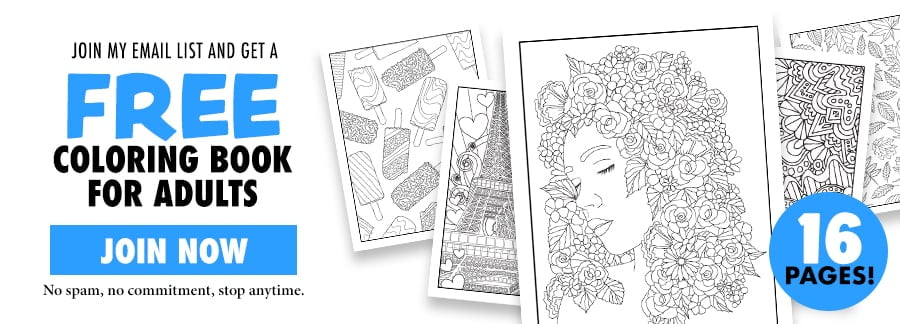
My team and I are still working on gathering all the data from each of the following tests. You can see the full results and scores of each set of pencils below:
I Tested Every Colored Pencil to Find the BEST ONE…
and here are ALL the results!
Of course, taking 90+ pencils through 11+ different tests (along with extra research on other factors) adds up to a LOT of information for one blog post. So I’ve broken this article up into a (hopefully) easy-to-navigate mini website for you, where you can go on your own mini journey to find the best colored pencils for any situation.
Blending
If you can learn to blend pencils, you can color almost anything. But not all pencils blend the same. With the right paper and the right technique, you can blend ANY brand of pencils. But some pencils just make this easier and produce better results for both beginners and advanced artists. Through 2 tests, I identified which colored pencils were the easiest to blend together.
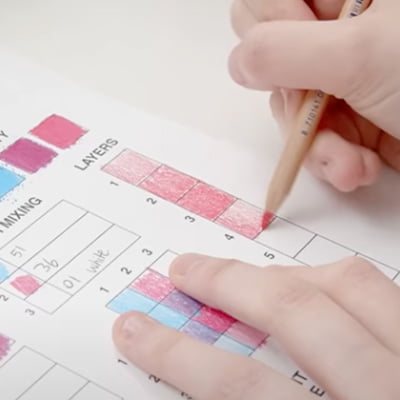
Layering (coming soon)
I tested how many layers each pencil can make. Building up layers allows you to mix colors, create smoother blends, and have a lot more overall control in what you are creating. It’s important if you’re wanting to create realistic textures or draw a photorealistic portrait.
Durability & Strength (coming soon)
If pencils are dropped or damaged, they can break along the entire core, making them crumble. Some pencils are built to be more durable and resist breakage, so I tested which pencils could handle more pressure and would be less likely to break. I also tested which could hold a sharp point for the longest.
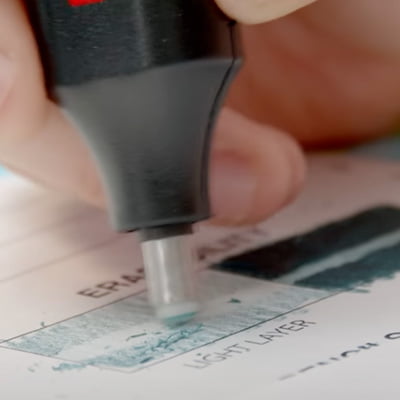
Erasability (coming soon)
I want to see which colored pencils can be erased, whether I’ve colored lightly or colored heavily. This can actually be a clever way to create highlights or bring back lighter areas when drawing things like hair or fur. And, of course, erasing is helpful if you’ve made a mistake.
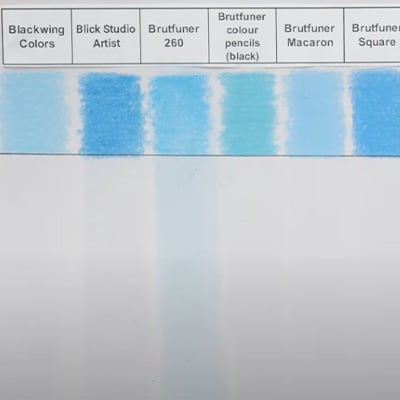
Water-Resistance (coming soon)
I wanted to test if the pencils are water resistant or water soluble. If you’re wanting to use your colored pencils with mixed media or any kind of sealing spray or fixative, you want to be sure that it’s not going to move if it gets wet. Or in some cases, you may prefer a water-soluble pencil.
Pencil Barrel Design (coming soon)
For this test, I looked at whether the pencil barrel matched the color of the actual core, and rated the pencils according to whether they included color names, numbers, and displayed easy-to-read fonts and colors.
Other things tested (coming soon)
I also tested color intensity, opacity on dark paper, performance on markers, along with researching some general information about the pencils. Read about it here.
Lightfastness (coming soon)
I’m planning to do my own proper lightfast testing on every single colored pencil brand from this article. Please subscribe to my email newsletter for updates on when this gets published in 2023!


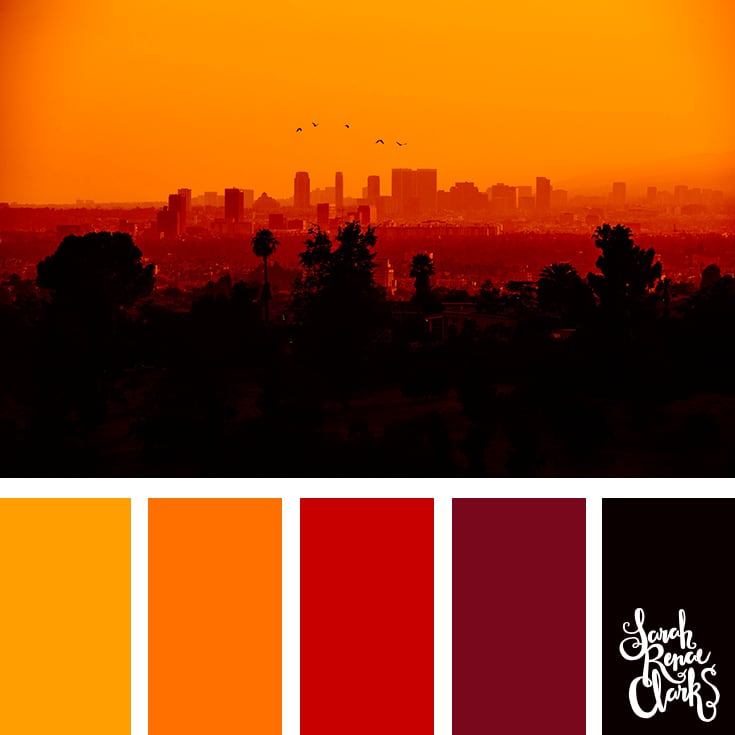


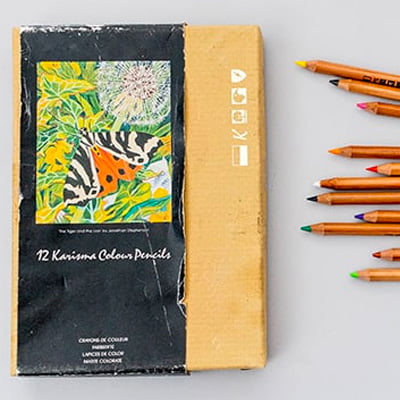
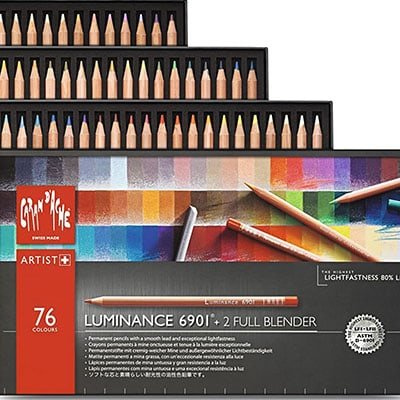
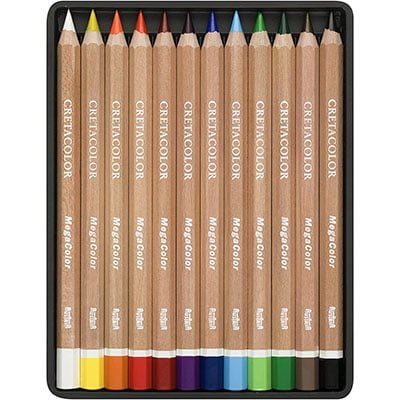
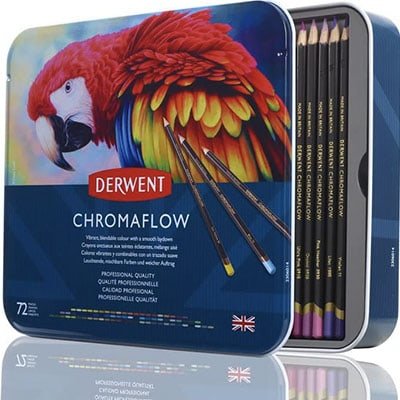
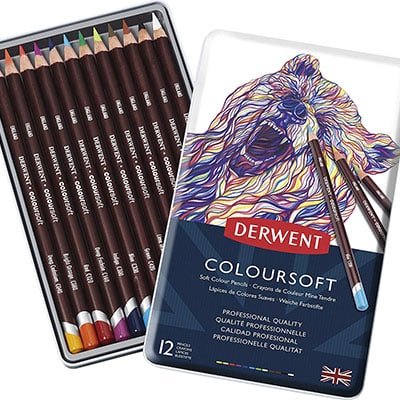
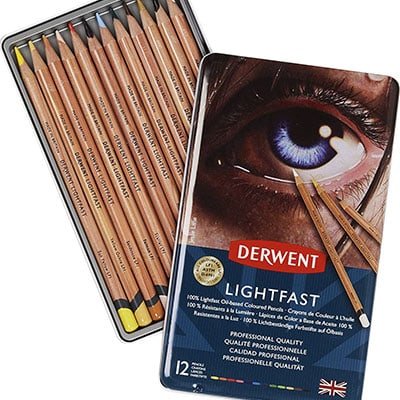
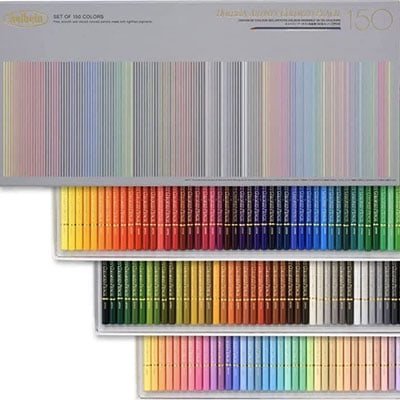
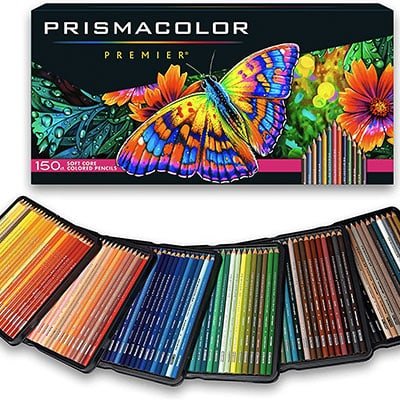
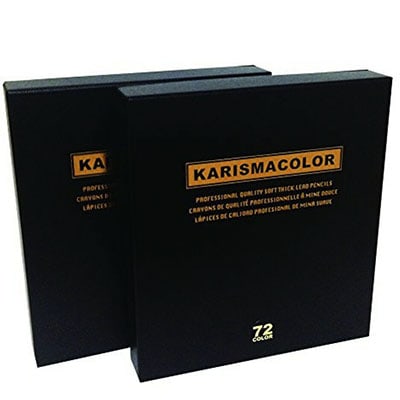
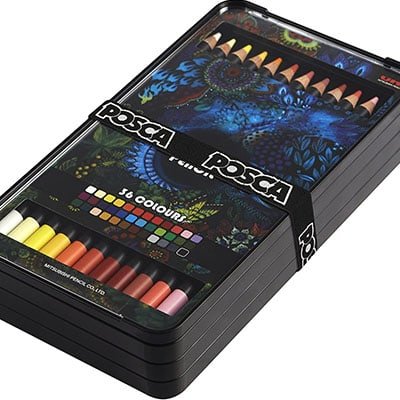
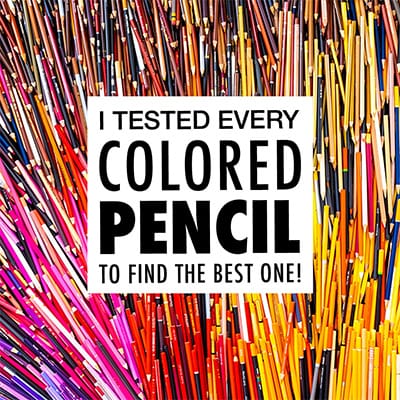
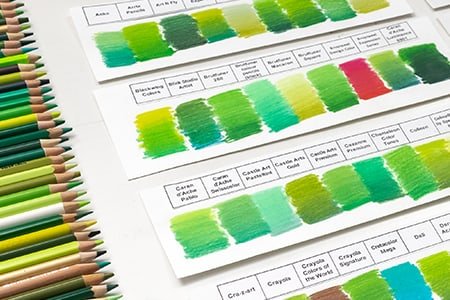
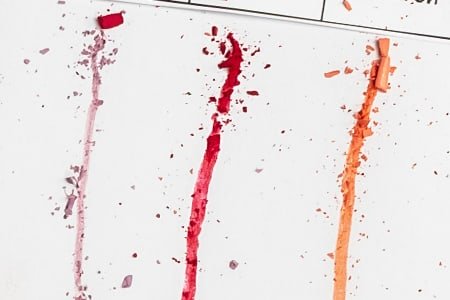
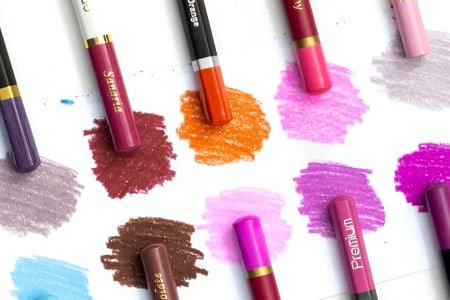
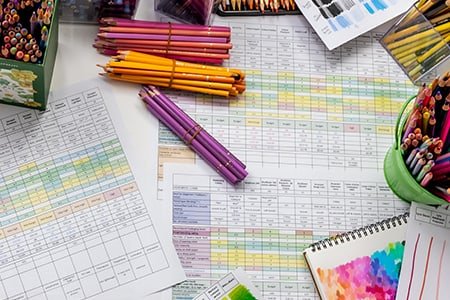

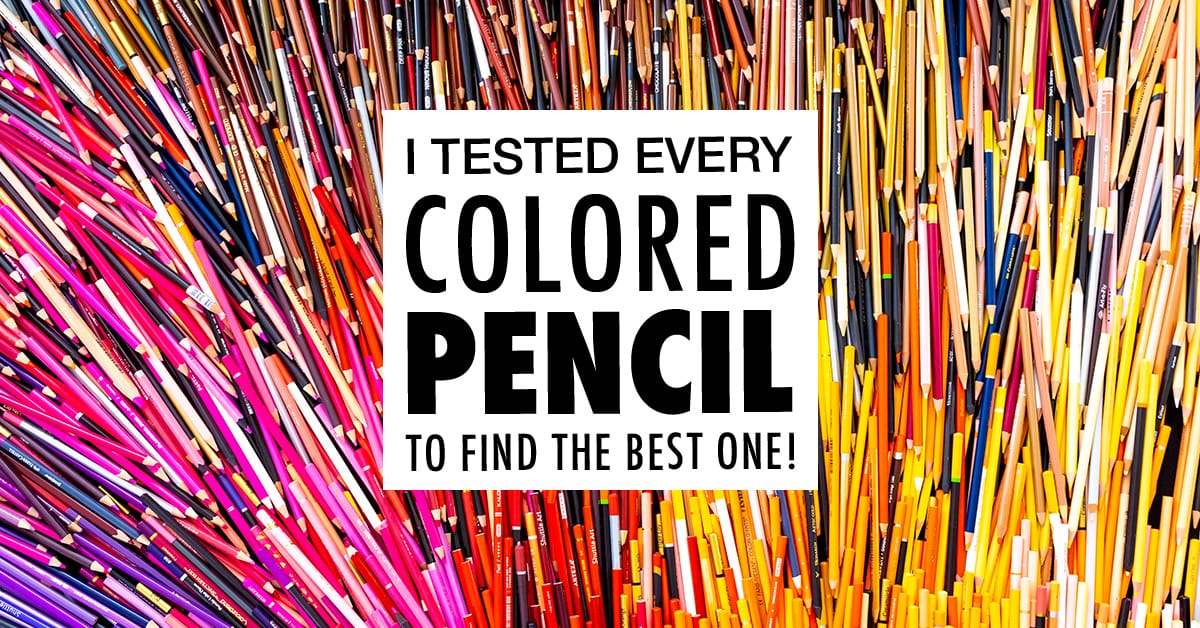
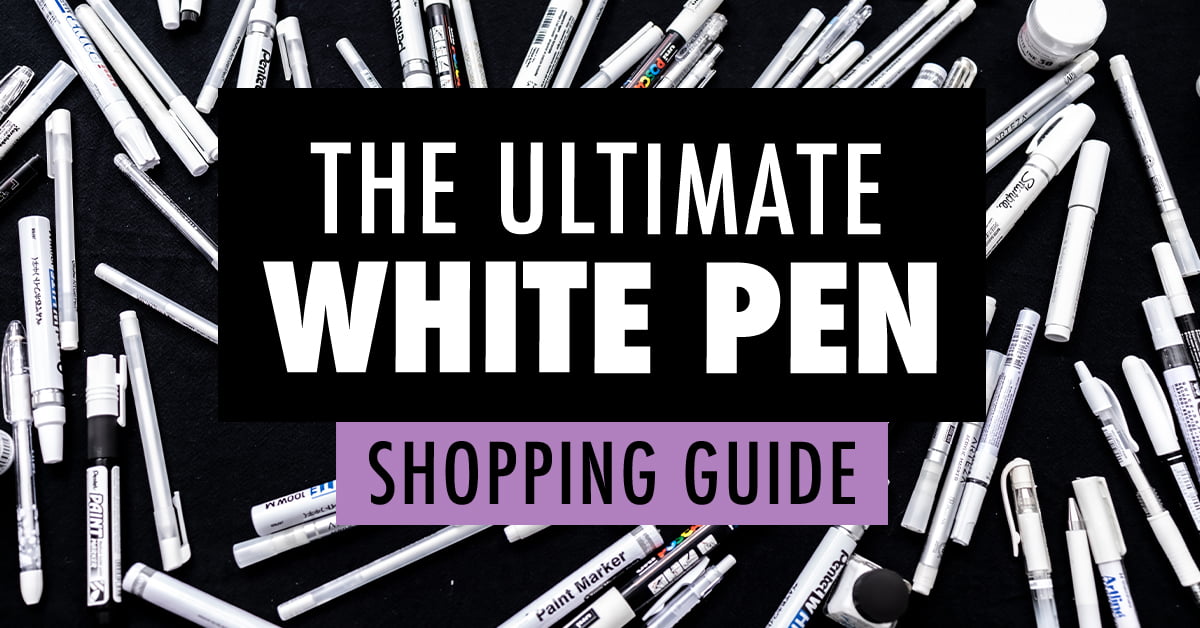
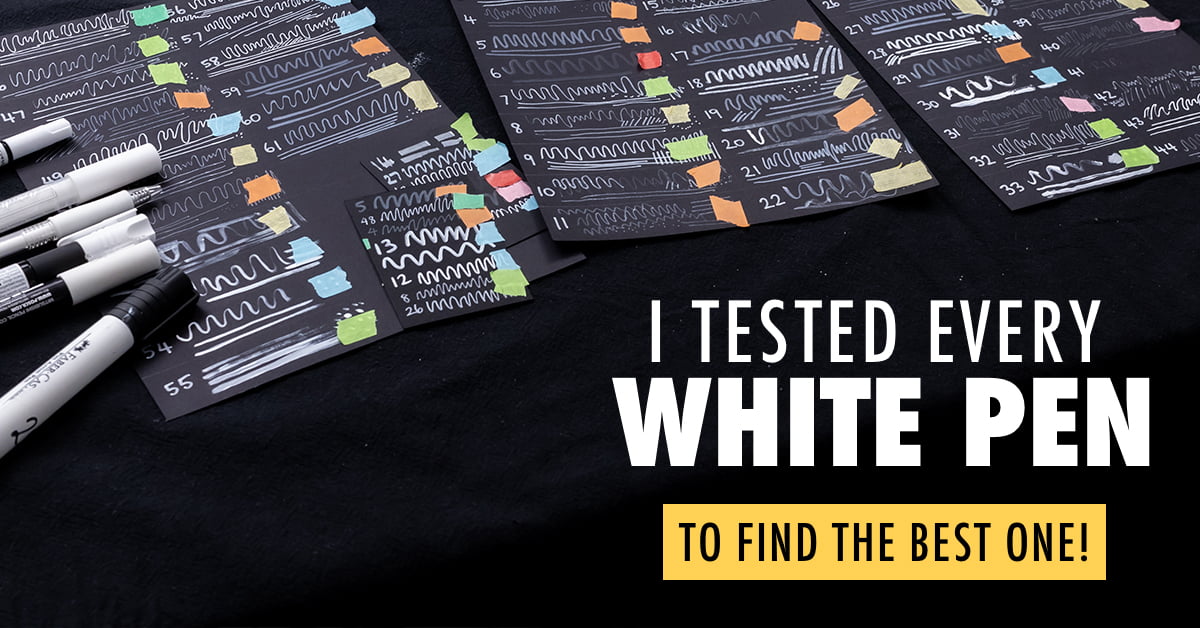
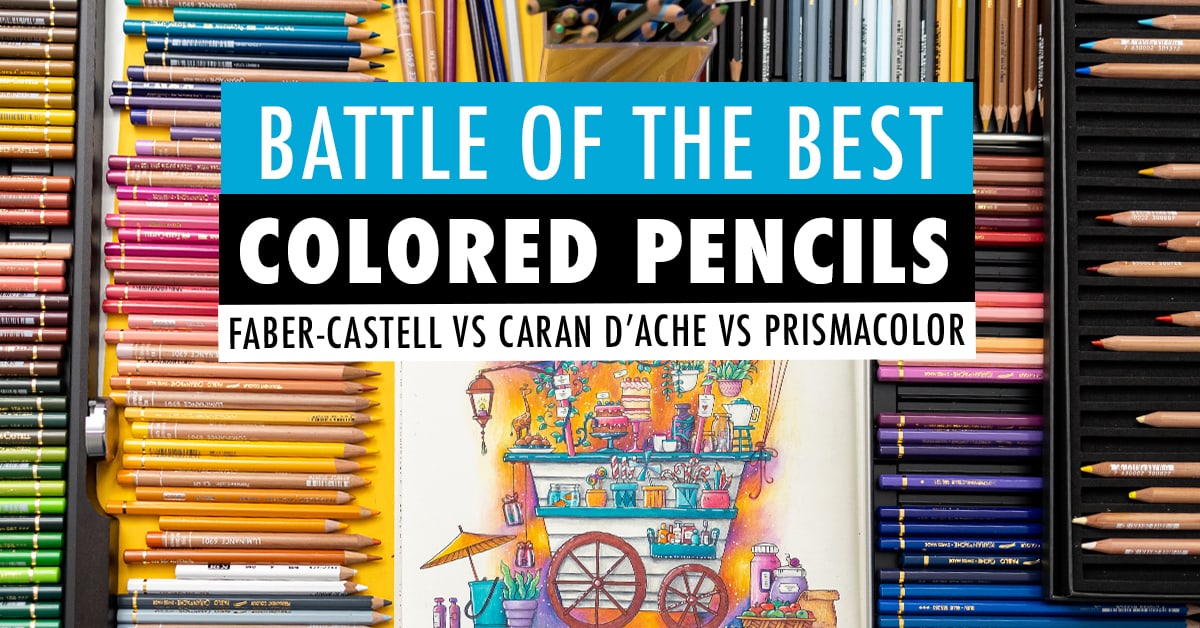
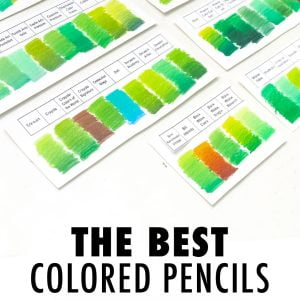
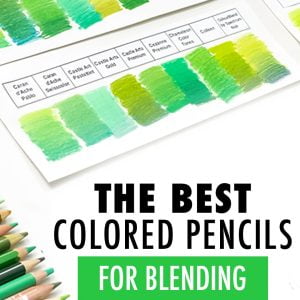
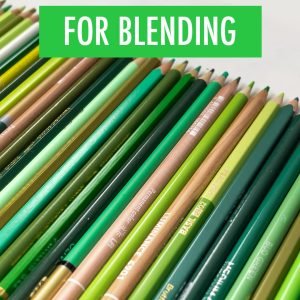
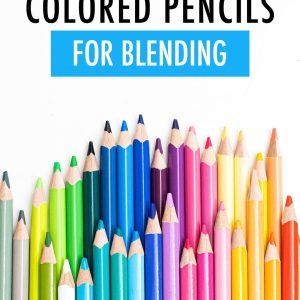
I love your stuff
You are worth your weight in gold. I’m getting into coloring for anxiety and mental health purposes. I’m also a frustrated artist who is looking for a way to step further into the craft, right now it’s coloring and experimenting with blending, colors, themes, etc., but someday I hope to start creating freehand doing abstract art. You are helping me build confidence and teaching me details I never thought of past basic coloring tips. Thank you.
This is a great post, and YouTube link is the icing on the cake. Thanks for taking the time to do it right.
Your testing results show that there are a lot of great pencil brands out there at all prices levels, which is so good to know. The one thing I am not sure about with the blending test and maybe even the upcoming layering test is the pigment levels? of each brand…which ones that ranked 5 had the best pigments? I am asking pretty much as a colorist who has learned a lot after following you but am still lacking in knowledge on a lot of levels!